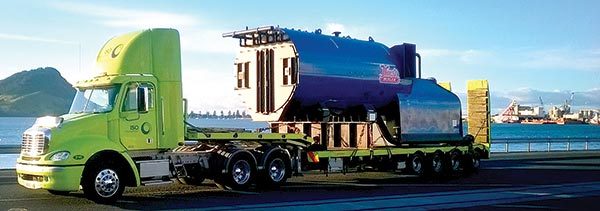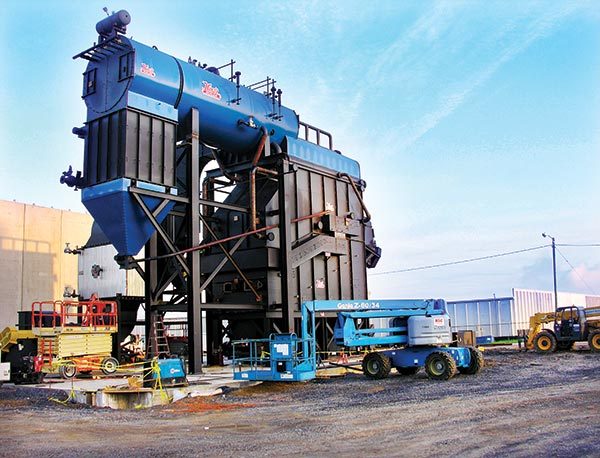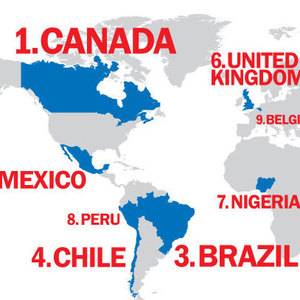Empowering Exporters










April 8, 2015
BY Anna Simet
Greg Smith is a guy U.S. biomass equipment and project exporters want on their side. When he founded Global Energy Solutions Inc. in 1997, the company served as a manufacturer’s representative for multiple HVAC and boiler system product lines. Over the course of two decades, Smith developed what he describes as a niche interest in remote and rural locations, and views his role as a collaborative facilitator who works with project owners and community leaders, legislators, and citizen groups to address unusual energy and power concerns.
Today, GES is a renewable energy program management firm that works closely with equipment manufacturers such as Hurst Boiler, specializing in biomass energy. And about 90 percent of the company’s business is exports, according to Smith. Having a keen interest in these kinds of projects isn’t the driving force behind GES’s over-the-border endeavors, however. First and foremost, its support of biomass energy in general, he says. “Except for the exchange rates, Canada is a really good place [for projects] because they support biomass very heavily. They believe in it, they understand it, and that’s not prevalent in the U.S.”
Not surprisingly, Smith, who recently visited the U.K., names the country as another very strong export location. His company, along with Hurst Boiler, is considering opening an office overseas, he says. And perhaps not as obvious, opportunity in Africa is developing, Smith points out, largely due to the U.S.’s Power Africa initiative. The ultimate goal of the program is to increase the number of people with access to power in sub-Saharan Africa by adding more than 30,000 MW of clean, more-efficient electricity generation.
Also active is Mexico, where Smith says Hurst has done a lot of business, particularly because of the abundance of spent agave material that makes an ideal boiler fuel. And, in recent years, the country has become much easier to do business within, due to a combination of government renewable energy goals and the opening up of its previously restricted electricity market.
Whether it is Canada, the U.K., Africa or Mexico, Smith says he can always count on the U.S. Department of Commerce’s International Trade Administration renewable energy division to assist.
Tooling Up
Established in 2010 when President Barack Obama announced the National Export Initiative, which aimed to double exports within five years, the Renewable Energy and Energy Efficiency Export Initiative is overseen by the Office of Energy and Environmental Industries, and largely serves to make life easier for exporters of renewable U.S. goods and services. “They’ll go to bat for us—they’re very helpful,” Smith says. “As an example, sometimes we’ll go to different countries and the requirements might be different on the certification of the equipment, say European Conformity (CE) in the U.K. or EU, or the British standard that is in play in some areas. We just did a project in New Zealand and they had a mix of British standard and ASME, which is very odd. Meeting regulations isn’t the issue—it’s trying to decipher them, it can take a lot of time. We look to the trade group to help us out, and they usually do. ”
While the department declined an interview with Biomass Magazine citing a reason of short staffing, Cora Dickson, senior international trade specialist for the OEEI, says that an updated version of Renewable Energy Top Markets Study—a market assessment tool for U.S. exporters that was released in February 2014 and included analysis for ethanol and wood pellet exports—was expected to be available in May. This time around, according to Dickson, it will be split into two different reports—one for electricity and one for fuels.
And another new tool for exporters is currently in development—an interactive app that will serve as a mobile business directory for U.S. clean energy exports. The app will highlight sustainability improvements at U.S. diplomatic missions and provide potential business partners around the globe with a searchable interface to find information on U.S. technology and service providers. Biofuels and renewable energy equipment are among goods and services the app will showcase.
Often working closely with the OEEI is another resource renewable energy exporters like Smith and Hurst might take advantage of—the Import-Export Bank of the U.S. The official export credit agency of the U.S. government, Ex-Im finances the export of U.S.-made goods and services with a special focus on renewable energy, including biomass, wind, solar and hydro.
Ex-Im stands ready to help U.S. exporters, says Craig O’Connor, director of Ex-Im’s Office of Renewable Energy & Environmental Exports. “We provide financing when financing otherwise wouldn’t be available on economically beneficial terms.”
Besides direct loans, Ex-Im also provides loan guarantees, export credit insurance, and, particularly helpful to small companies needing cash to build their product, working capital. “If you’re a small business needing that working capital and your local bank is nervous because the source of payment is an overseas sales contract, Ex-Im can give the bank a guarantee to make a loan to the U.S. exporter to build out the system for export,” O’Connor says.
While Ex-Im more commonly aids U.S. exporters, it also serves to provide assistance to international buyers of U.S. goods and services. In that case, on top of assurance that U.S. technology providers have been identified—such as harvesting equipment and boilers—buyer creditworthiness confirmation, and identification of the type of financing desired, location is an immediate detail Ex-Im will evaluate. “We do have a country limitation schedule,” O’Connor says. “This shows where we’re open, and where we’re not.
On biomass power projects specifically, O’Connor says the challenge is that they tend to be small. “An [effective] approach would be to structure the project like you would the sale of machinery,” he advises. “Don’t look at it as project finance. The sponsor might say, ‘We want to repay the loan based on sales of electricity,’ but that becomes tough, particularly to prove that they have a supply of biomass, which becomes difficult to do over long periods. Secondly, with smaller-scale projects, there are also due-diligence costs that can also be incurred—financial due diligence, legal due diligence, Ex-Im bank will hire its own engineer to tell us about project specifics—and these transaction costs work against these smaller-scale projects. “
If the international buyer is creditworthy and is willing to take on the project risk but could use financing for the equipment to get things going, O’Connor recommends structuring it this way—as a trade finance or corporate finance loan verses a project finance loan. “It’s probably more advantageous,” he explains.
On renewable exports in general, a current challenge is the strengthening U.S. dollar, O’Connor says, and that’s something Smith can attest to—as of mid-December, the U.S. dollar index was trading just under 89 cents, the highest level since March 2009. “It helps most Americans, but it doesn’t help exporters,” Smith says. “When it’s strong against the euro or British pound, it means our product is a lot more expensive to buy. In Canada, some projects there may get stopped or cancelled because a year ago, Canadian dollar was on par or $1.05, now it’s 77 cents. You want the dollar to do well, but when it costs more to buy a U.S. product than from somewhere else, that’s a detriment.”
“It does get tougher,” O’Connor reiterates. “If you’re an international buyer and all of a sudden you have to spend more to buy the machine you want from the U.S., that exporter may lose the sale or face lowering the price.”
While Ex-Im’s biomass energy financing is quite small in comparison to wind or solar, O’Connor points out that the bank is demand-driven and available. “We don’t say, ‘here’s your line of credit for the year’; we stand ready to help, whether it’s the export of wood pellets or machinery. If you look at the trade numbers in terms of renewables, solar has been the biggest followed by wind, and biomass tends to be smaller. In terms of machinery, I’m not sure that we export more than $50 million a year, but we’d love to do more, we definitely would.”
Smith highlights the benefits exporting has on the U.S. economy—in particular, jobs. “I’ve heard some different metrics as to how increasing exports as the fastest way to increase [jobs]—dealing with existing companies and increasing their output—and I think that’s definitely true,” he says. “If you look at an old-line company like Hurst, they never used to export at all. They began as a regional manufacturer when they started, grew substantially, and is one of the last twenty-some boiler companies left in the U.S. as far as industrial and commercial, and really close to 50 percent or more exports.”
“A lot of places, most places we've been, love U.S. products,” Smith adds. “They may say they don’t like certain things about our country, but our products are tried and true and have a tremendous reputation, and that helps greatly when we’re doing business overseas.”
Author: Anna Simet
Managing Editor, Biomass Magazine
701-738-4961
asimet@bbiinternational.com
Advertisement
Advertisement
Upcoming Events





